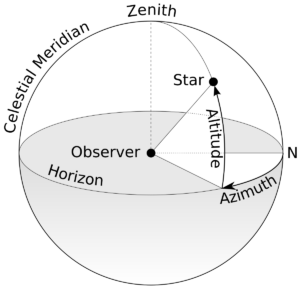Is solar worth it? Can I have a net-zero home? Will I see a return on my investment? These are all common questions people have when they first start researching solar. But homeowners can feel confident about their decision to go solar when they choose A&R Solar.
First, we’ll give you the facts about how much energy your system is expected to produce each year. Then we’ll back that up with a written 10-year solar production guarantee.
QUICK LINKS
What is a solar production guarantee?
Before designing your system, we start by assessing your electricity bill. From there, we design a system that meets your budget and energy needs, including any potential additions in the future like an electric vehicle or a heat pump. We then model your home and perform a detailed shade analysis in order to determine the expected energy production of your new system. Thanks to our years of experience designing systems and historical production data, we are able to guarantee your annual solar energy production over a period of ten years.

A production guarantee provides you peace of mind in your solar investment
So what happens if my solar energy system doesn’t meet the solar power production guarantee?
It’s pretty simple: If your system does not meet or exceed the promised energy production for the production year, we’ll pay you for any missed production, plus 10%.
Payment = [Missed Energy Production (kWh)] X [Utility Rate] X [110%]
To better understand how we calculate a production guarantee, consider what our design consultants analyze when creating a proposal.
What to consider when designing a solar system?
Azimuth Angle: Measures the orientation or cardinal direction in which your solar panels face.
 South-facing solar panels maximize daily sun exposure and produce more energy on an annual basis. Remember, the sun faces south in the Northern hemisphere, so it’s more efficient to install solar panels on a south-facing roof. However, west- and east-facing solar systems still generate significant energy production, with peak energy output in the afternoon and morning, respectively, as opposed to mid-day.
South-facing solar panels maximize daily sun exposure and produce more energy on an annual basis. Remember, the sun faces south in the Northern hemisphere, so it’s more efficient to install solar panels on a south-facing roof. However, west- and east-facing solar systems still generate significant energy production, with peak energy output in the afternoon and morning, respectively, as opposed to mid-day.
With software modeling, years of experience with multiple roof types, as well as a slew of tools and solar resources at our disposal, A&R Solar can provide accurate energy expectations on every quote.
Shading: Shade obstructions can disqualify a home quickly, though homeowners have some discretion to remove them if possible. As you can imagine, trees are the main shade consideration in the pacific northwest. It’s worth noting that while a tree might not pose a problem at the time of design, there is a chance that it could become an obstruction because of future growth.
Roof pitch: The roof pitch, or angle of incidence, is the angle at which sunlight hits a solar panel, and it determines how much energy those panels can produce. The more perpendicular the sun is to the pitch of the roof, the more energy each panel will generate. With that in mind, an optimal roof pitch is anywhere between 10 – 45 degrees. However, optimal angles will depend on your geographic location, as the angle at which the sun hits your solar panels will change given your latitude and longitude. In the pacific northwest, ideal roof pitches tend to be in the range of 28-32 degrees for south-facing roofs, and 10-15 degrees for west- and east-facing roofs.
Discerning solar design consultants will also factor in the pitch as it relates to labor costs and solar module maintenance. Very steep roofs slow the installation process and therefore require more labor. Flat roofs may require kits to tilt modules at an angle and may require a different approach to roof attachment.
Geographic location: Solar irradiance is a measure of power from the sun which is received here on earth. The more solar irradiance, the more energy your solar system can produce. As one can imagine, different geographic locations have higher solar irradiance than others, so it’s an important variable in the energy production equation.
Hardware: A solar panel’s power output (Wattage) and degradation rate (loss of efficiency over time) are inherent to every solar panel. So there’s no doubt that choosing what solar panels to install will affect how much energy you can produce. There’s a lot of variability in this process, especially with today’s supply chain issues. That’s why we always recommend working with a solar design consultant in order to maximize efficiencies while maintaining budget expectations.
These are some of the variables that go into designing a solar energy system for your home. With the most NABCEP-certified employees in the Northwest, A&R is uniquely positioned to minimize risk, set realistic expectations, and deliver on production guarantees.
But how is my energy production measured such that I’m certain what’s promised is what’s delivered?
Issues affecting a solar production guarantee
With over 4,000 residential solar installations under our belt, we’ve identified two potential issues that could affect a solar production guarantee. Both can be easily identified and easily fixed.
Cleaning solar panels
As they are forever exposed to the elements, solar panels can become dirty during the dry seasons, resulting in a slight loss of energy production. With some basic cleaning of your solar panels, you can ensure your solar energy system continues to hit solar energy production numbers. Cleaning panels should be done every few years, or whenever they are visibly very dirty. It’s a relatively simple process and something that can be done by the homeowner. Depending on the pitch of your roof and your tolerance for heights, you can choose to hire a professional.
Cleaning is as simple as spraying your panels down and using a soft-bristled brush and Simple Green to scrub your panels clean. Make sure afterward you remove all soap and residue that might have accumulated on the surface.
Solar panel inverter issues
Checking that your inverter is functioning properly will ensure that you’re always maximizing production. Depending on your inverter type, monitoring functionality can be as simple as ensuring green lights are aglow on your device. If you have microinverters, you can check on your system by logging into your monitoring website and seeing if your performance is what’s expected.
For both microinverters and string inverters, you want to make sure that these devices are always connected to the internet. A failed internet connection will result in a loss of monitoring capabilities, which will make it difficult to identify and assess an issue if it were to arise.
Solar production guarantees aren’t provided by all solar installers. These guarantees, which are part of your contract, instill confidence that your system will produce what we say it will. At A&R, our relationship doesn’t stop after we install your system. We make sure that it continues to perform as we promised.

